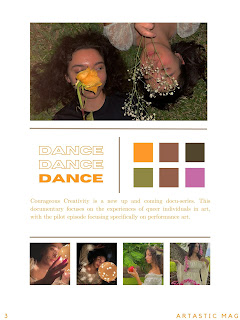Ever since childhood, I have been infatuated with romantic books and movies. I'm not the only one either: romance is one of (if not the) most popular genre in any form of media.
It allows for people to yearn while simultaneously connecting with the innermost emotions of the characters. Romance is a popular aspect to media, even in films and shows that are not specifically romances. You can commonly find it as a part of the subplot of many varying movies, from action to comedy, sci-fi to western.
Content:
Romance films often follow stories of love between two people, usually a man and a woman. This display can be toxic or healthy, happy or sad, conclusive or unresolved, but there will always be outside conflict that threatens the relationship at one point or another. This can achieve a sense of hopelessness amongst the viewers, unless it is able to be overcome; then, the viewers feel inspired.
Example: In the film the Time Traveler's Wife, the starred couple must face the struggle of dealing with the main character's illness: Chrono-Displacement Disorder, which causes him to drift through time.
A common emotion that is portrayed in romance is jealousy. This usually stems from a misunderstanding between the main couple and involves another character. This creates suspense and prolongs the pining period between the two love interests. For the audience watching, it can create either immense frustration or intense interest in how the plot will play out. Either way, it encourages audience involvement. Depending on the production, the characters can either escape real world problems and live in a fantastical land (escapism), or real world problems are heightened and used as plot points (relatability).
There are numerous tropes that come along with romance. An extremely popular trope in young adult and teenage romance is the formation of a love triangle, with two potential love interests. If you've watched any popular dramatized romance, chances are you've come across this trope. It creates audience engagement as fans debate over their favorite love interests. Another common trope is enemies to lovers, where the love interests garner initial disdain or rivalry towards one another. However, as the plot progresses, they slowly begin to develop a romantic relationship. This usually leads to a bit of a surprise for the audience.
Example: In the popular teen drama the Vampire Diaries, there is a love triangle between the main character, Elena, and two brothers, Stefan and Damon.
Production Techniques:
Romance films and shows are generally given soft lighting and pretty, pastel colors to evoke a sense of happiness and calm within the production. Sometimes filters are used to make the colors muted and and foggy, which insinuates the feeling of being ethereal to the viewers. If the plot turns sexual at any point in time, the colors will continue to stay soft but will shift into darker tones. The lighting will dim and emphasis can be put on colors of passion and warmth, such as flame orange and lipstick red.
Music plays an important role in building the mood as well. Gentle music can be used to evoke a sense of peace and comfort in the viewer. Dramatic music with a heavy, tense sound is used to build tension during scenes of conflict. Sensual music uses slow tempos and deep tones to promote the feeling of yearning and want.
Example: In The Shape of Water, the score utilizes an abundance of soft water sounds to tie into the premise of the plot and touch base with the viewers' sense of longing.
Marketing:
The target audience for romance is generally teenage girls, with occasional romances made for older women as well. This is because women and girls are generally more interested in romance than men. The exception to this is rom-coms, which can be geared towards both women and men. This type of romance is generally promoted as being suitable for a date night at the movie theatre.
Posters for romances all seem to follow a similar formula. The love interests are put together directly in the middle of the poster. A popular pose for serious romance films is when the two characters have their foreheads together with their eyes closed, as if about to kiss. A popular pose for more lax or comedic romances is having the characters lean against each other, back to back.
Example: This is the poster for the movie The Notebook, and gives a pretty solid idea for how a majority of romance posters are.
Samples:
















